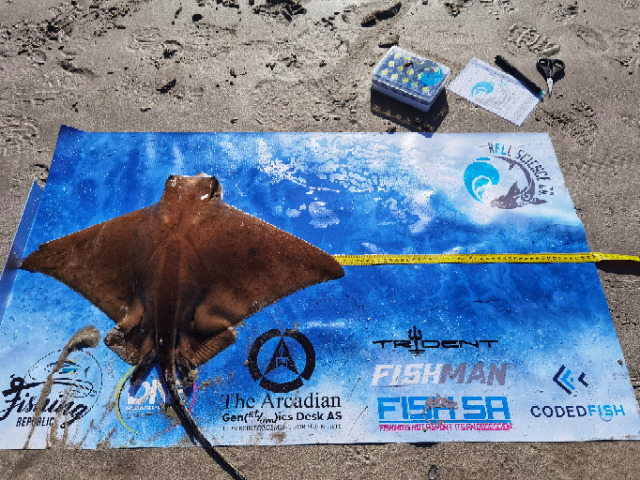Summer fever, a ray of light for the critically endangered “common” eagle ray
Down in South Africa, we are extremely fortunate to be able to witness the most incredible fevers of common eagle rays. Come January/February, False Bay is filled with hundreds of these flying ocean pancakes. Cruising in the tidal pools and along the warm, sandy shallows of the Bay. It is a magical sight to behold. This also happens on the West and East Coasts of South Africa.
As a South African witnessing these fevers of common eagle rays, right on our doorstep, it’s hard to believe that this species is listed as Critically Endangered. Unfortunately, this is not the case in other parts of this eagle ray’s distribution. Sadly, the common eagle rays are no longer all that common in the northeast Atlantic and Mediterranean.
So why are we so lucky to have such large numbers of common eagle rays showing off for us?
When looking at the areas that these common eagle rays call home, they don’t appear to be too fussy. This species can be found from the Mediterranean through the East Atlantic tropics, cold-temperate South Atlantic, and tropical reaches of the east coast of Africa. However, they seem to draw the line at “home” when it comes to Senegal, Mauritania, and central Angola.
From their wide-ranging distribution, the common eagle rays seemed mighty comfortable across a broad range of temperatures (~10 – 30 °C). However, when taking a closer look, these rays may be a little fussier than originally thought. For example, there is a chilled group that appears to enjoy lower temperatures of 15 °C to 20 °C. Then there are the ones that prefer a more summer vibe at temperatures between 25 °C and 30 °C. Interestingly, there does not appear to be much love for the 20 °C to 25 °C bracket.
What is that about?
Well, this may be telling us that because not all the common eagle rays like the same temperatures, there may be a “barrier” in place that they are not too keen to cross. In this case, the tropical region could be a barrier for the temperate populations. This may result in the northern and southern temperate eagle rays being separate populations, or species, isolated by the glacial and interglacial phases during the Pliocene Epoch, 5 million to 2.5 million years ago.
Does this mean that there is a relationship between environmental conditions and this species’ occurrence? May be!
This is what we are going to find out.

Sampling setup on beach. Photo © Michelle Soekoe

Measuring an eagle ray. Photo © Michelle Soekoe
